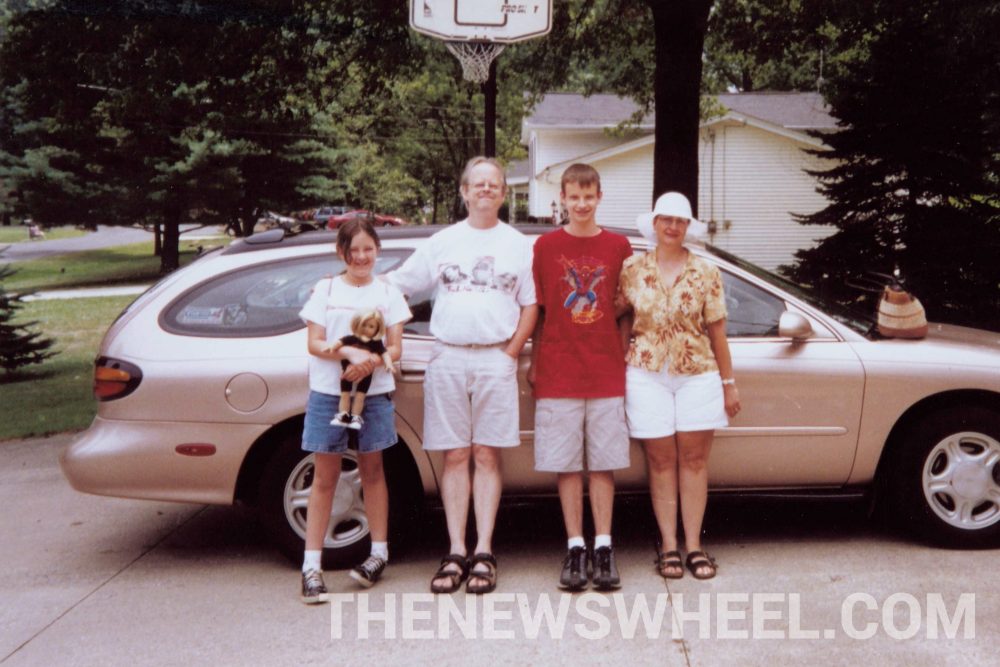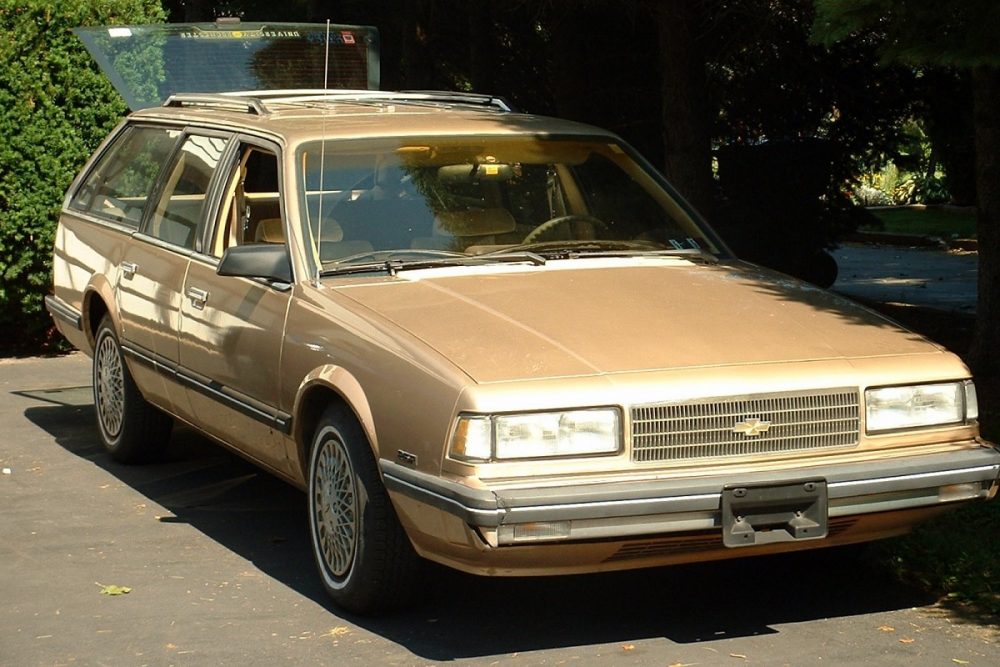
Photo: The News Wheel
I grew up riding in the backseat of a Ford Taurus station wagon — and I mean the rearward-facing backseat where we made faces at other drivers! That seems like ages ago, as station wagons have disappeared from America’s roads quite suddenly. Why did station wagons vanish so suddenly in the U.S., and will they ever return?
Wacky Woodies: Why were wood-paneled cars so popular for a time?
What is a station wagon?
Let’s start by properly defining what a station wagon is: A four-pillar passenger car with a long roofline that expands the cabin and omits the trunk. This differs from a hatchback which has a similar rear layout but only three pillars so it’s shorter in length. Wagons are also known as estate cars.
Unlike a sedan with three pillars (A, B, and C), wagons have a fourth pillar (the D pillar) at the rear end. This extends the roofline and passenger area all the way to the rear instead of slanting down into an enclosed trunk.
When were station wagons popular in the U.S.?
The height of the station wagon sensation in the United States was in the 1970s. Although the station wagon as you know it had been common since the 1950s (as models like the Chevrolet Bel Air Nomad) and lasted through the late 1990s, sales of station wagons in the U.S. peaked in 1976 according to JATO Dynamics data.
The baby boom of the mid-20th century compelled buyers to shop for vehicles with more seating and cargo space than regular sedans. As a result, models like the Ford Country Squire, Pontiac Safari Wagon, Mercury Montego MX, Dodge Aspen Wagon, AMC Eagle Wagon, and Chevrolet Impala Wagon sold in high numbers in the 1970s.
Why are station wagons gone now in the U.S.?
Multiple factors caused wagons to fade from popularity in the late 1980s and 1990s. Some of them include:
- A new generation who didn’t want to drive the wagons that their parents drove
- Stricter CAFE fuel economy/emissions standards that put car-based wagons in a pinch
- The debut of the minivan better fulfilled the people-moving transportation that families needed
- Automakers began focusing on models that were more profitable
You can point to 1996 as the year of the station wagon’s death knell, when the Chevrolet Caprice, Buick Roadmaster, and Toyota Camry Wagon were discontinued in the U.S. The Ford Taurus wagon was close behind in its demise, as was the ill-fated Dodge Magnum.
Photo: The News Wheel
Are any station wagons still sold in the U.S.?
Some wagons are still sold in the United States, but these are mostly “luxury wagons” – like the BMW 5 Series Touring, Audi A4 Allroad, and Mercedes-AMG E63 S Wagon. These are not the type of bulky, wood-paneled American station wagons your grandparents drove.
Are there station wagons in other areas of the world?
Yes, some countries still continue to sell wagons in their automotive markets, including Germany, the U.K., Sweden, Norway, New Zealand, Australia, and Japan. Station wagons are popular there because of their spacious cargo storage and fuel economy compared to full-size trucks and SUVs — such as Volvo and Subaru models. Crossovers have not replaced wagons in these regions as much as they have in the United States.
Photo: The News Wheel
What replaced station wagons on the automotive market?
Minivans became the people-mover of choice for families in the 1980s as wagons began declining in popularity. Minivans had taller ceiling height, were perceived as safer in crashes due to their larger size, and felt fresh and cool compared to passé wagons. Plus, automakers preferred making minivans over wagons because they had less-strict CAFE standards than passenger cars did.
Will station wagons ever return to the U.S.?
Probably not in the form that they used to be at their height of popularity in the 1970s. Many people point to how crossovers are essentially serving the same function as wagons but with certain advantages that people prefer: higher seating position, more headroom, upright chair seating position, and prevalence of all-wheel drive. As one Reddit user put it, “Minivans killed the wagon. SUVs killed the minivan. Crossovers killed the SUV. Crossovers are just tall wagons.”
Aaron is unashamed to be a native Clevelander and the proud driver of a Hyundai Veloster Turbo (which recently replaced his 1995 Saturn SC-2). He gleefully utilizes his background in theater, literature, and communication to dramatically recite his own articles to nearby youth. Mr. Widmar happily resides in Dayton, Ohio with his magnificent wife, Vicki, but is often on the road with her exploring new destinations. Aaron has high aspirations for his writing career but often gets distracted pondering the profound nature of the human condition and forgets what he was writing… See more articles by Aaron.
